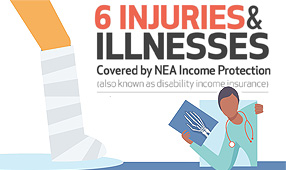Key takeaways
- Outsmart internet scammers and avoid fraud by buying from reputable companies.
- Pay with credit to help keep your bank accounts safe.
- Know your rights if something goes wrong.
Who doesn’t love online shopping? With draws like free shipping, tempting discounts and seemingly infinite options, it’s never been more enticing or convenient. You can make sure your online shopping experiences are safe, too. Read on for five ways to outsmart internet scam artists and protect yourself from unscrupulous sellers.
1. Shop at well-known companies. Start with sellers you know, says James P. Nehf, Professor of Law at the Indiana University Robert H. McKinney School of Law at Indianapolis, and “buy from a company you’ve already had success with.”
If that’s not possible, browse the business directory on the Better Business Bureau website. “We only accredit companies we consider trustworthy,” says Claire Rosenzweig, President and CEO, BBB of Metropolitan New York.
2. Make sure the company's terms and conditions are transparent. “An offer should be well-defined,” and images and descriptions should match products offered, says Rosenzweig. All of the terms and conditions should be published on the company’s website: refund policies, privacy policies, shipping and handling fees, delivery times, rebates, discounts and sale prices.
3. Don’t give in to pressure. Be immune to tactics that push you to buy such as “supply is limited” or you must “act now to save.” And if an emailed deal sounds too good to be true, it usually is, says Nehf. “Chances are, someone is looking to phish, or steal, personal information.” Be skeptical of emails that contain coupons, sales, special offers, shipment tracking or account information. Move your cursor to hover over link text in the message to see where that link really goes. You’ll foil phishing scammers who “spoof” (use fake addresses and copied logos) legitimate company emails to trick less cautious online shoppers into giving scammers their personal, financial or account information.
4. Shop through a secure connection. Always use a secure browser that encrypts, or scrambles, your personal information. You’ll know your browser is safe when you see the address bar starts with https:// (the added S stands for Secure) or a closed padlock, or both. And shop over a secure Wi-Fi connection. The unsecured connection at your local coffee shop is not a good place to do your online shopping. If the connection is public, you risk having others see, or steal, your personal information.
5. Create a free webmail account to use for online purchases. You’ll protect your privacy and make it easier to spot fakes if scammers send a purchase-related email to your personal or work email address. And, “most emails are not encrypted, so never email credit card or other personal information,” Nehf warns.
6. Read the line displayed in your browser's address bar before you click. Check for typos and misspellings. Scammers hope you won't notice small typos such as Costcoo.com, a scam site, instead of Costco.com, the real site. Use Google's easy Transparency Report to check a website’s safety before you browse or shop there. Search engines such as Google and Bing are also helpful tools for checking a company or product's complaint history. “If the company has a bad track record, someone’s probably blogging about it,” notes Nehf.
A scam site called Pandorapick.com closely resembled Pandora.net, a legitimate jewelry company. Shoppers who thought they were getting a super deal with Pandorapick’s “up to 75% off” got cheap imitations from China instead, the Better Business Bureau warns. Use BBB Scam Tracker to pre-screen sites. Enter a keyword such as “designer purse” or “football jersey” and “online purchase” to see a list of reported scams.
7. Use strong passwords or passphrases. Your passwords should contain more than 10 characters, including upper and lower case letters, numbers and symbols. And they’re harder to crack when you don't use birthdates, names, addresses, phone numbers, social security numbers, etc., that can be surprisingly easy to find. Choose different passwords for each shopping account. You can simplify the task with a password generator like LastPass (free) or a password manager app (free or paid) that can create—and remember—a unique and strong password for each site you visit.
8. Pay with plastic. Stick to shopping sites that let you use safe payment methods: your credit card or PayPal account linked to a credit card.
Reputable sellers won't demand payment by wire transfer, cash, money order, prepaid gift cards, Bitcoin or other cryptocurrencies. But scammers do because they know your chances of getting that money back are slim to none.
Your protection is better when you use your credit card for online purchases rather than your debit card, which takes money directly from your checking account. The law limits your liability—the amount you could lose if the deal goes bad—to $50 for both types of cards, but debit card rules are trickier.
Here’s why: When you pay with a credit card, any amount over the $50 cap is “typically absorbed by the issuer of your credit card," the Federal Deposit Insurance Corporation (FDIC) says. While debit cards also limit your liability to $50, there’s a caveat—you have to notify your bank within two business days after you find the unauthorized charge. If you miss the two-day time limit, “you could lose up to $500, or perhaps more,” the FDIC notes. If you spot an unauthorized charge on your bank statements, you have 60 days to alert your bank or “you could be liable for any amounts from transactions made after that 60-day period.”
Even if your bank’s rules are more flexible, you'll be safer and have less hassle when you pay with a credit card online instead of a debit cards. Plus, you won’t have to try and get the money restored to your checking account.
9. Use a virtual credit card. This is a randomly generated temporary number that works like an ordinary credit card number for online transactions without exposing your real credit card to risk. Many credit card companies offer the virtual-card concept in an effort to thwart online shopping fraud. All are excellent no-cost ways for existing cardholders to shop safely online.
10. Maintain a paper trail. Print out a dated copy of the seller’s terms and conditions, the product warranty, the item’s description, company information, receipts, emails between you and the seller (especially if you’ve participated in an online auction), notes from phone conversations and any other records of your transaction, and keep them together for your records. Be a detail freak: Save images of the offer including item names, numbers, descriptions, shipping information, guarantee or warranty, return policies, shipping information, payment details and purchaser confirmation.
Know your rights if your transaction goes wrong
Federal law requires that orders made by mail, phone and via online merchant be shipped by the date promised or, if no delivery time was stated, within 30 days (or 50 days to allow approval time if you've applied for in-store credit). If your item isn’t shipped on time and you have not consented to a delay, you may cancel the order and demand a full refund. “Consumers also have the right to reject defective or misrepresented merchandise at any time,” says Rosenzweig. If a seller refuses to grant a refund for such products and you’ve paid with a credit card, “contact the credit card’s lending bank, and contest the charges,” says Nehf. “They should remove them from your statement and charge them back to the seller.”
If, despite your best efforts, you feel you've been ripped off or your seller refuses to respond, fight back. You can file a complaint with the BBB, Office of the State Attorney General (in your state or the seller’s state) and the Federal Trade Commission, which receives international consumer grievances, too.












